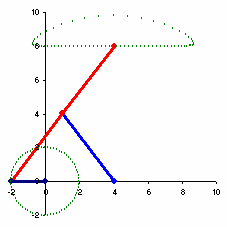Ball Detent Torque Limiter: Overload Clutch
A torque limiter is an automatic overload clutch that provides machine protection and reduces repair time during jamming load conditions. This is done to protect expensive machines and prevent physical injuries. A torque limiter may limit the torque by slipping (as in a friction plate slip-clutch), or uncouple the load entirely (as in a shear pin).

Ideally the torque limiter should be placed as close as possible to the source of the jam. This will allow the system inertia and torque to be quickly and effectively disconnected from the jammed section. The system can then be allowed to stop without causing further machine damage. A mechanical torque limiter will provide faster response times and better protection than typical electronic methods at high crash rates.
There are several disconnect types available, but we will focus at the Ball Detent type.
A ball detent type torque limiter transmits force through hardened balls which rest in detents on the shaft and are held in place with springs. An over-torque condition pushes the balls out of their detents, thereby decoupling the shaft. It can have single or multiple detent positions, or a snap acting spring which requires a manual reset. There may be a compression adjustment to adjust the torque limit. Unlike friction style or shear pin type torque limiters, ball detent torque limiter can provide an accurate method of resetting the torque with no operator intervention. A single position clutch will reengage in the exact rotational position each time. This is often necessary for system timing in bottling, packaging, and paper converting type applications.
This is how it works.


Ideally the torque limiter should be placed as close as possible to the source of the jam. This will allow the system inertia and torque to be quickly and effectively disconnected from the jammed section. The system can then be allowed to stop without causing further machine damage. A mechanical torque limiter will provide faster response times and better protection than typical electronic methods at high crash rates.
There are several disconnect types available, but we will focus at the Ball Detent type.
A ball detent type torque limiter transmits force through hardened balls which rest in detents on the shaft and are held in place with springs. An over-torque condition pushes the balls out of their detents, thereby decoupling the shaft. It can have single or multiple detent positions, or a snap acting spring which requires a manual reset. There may be a compression adjustment to adjust the torque limit. Unlike friction style or shear pin type torque limiters, ball detent torque limiter can provide an accurate method of resetting the torque with no operator intervention. A single position clutch will reengage in the exact rotational position each time. This is often necessary for system timing in bottling, packaging, and paper converting type applications.
This is how it works.

- When the set limit torque is reached, the clutch disengages; the torque drops immediately
- After the cause of overload has been removed, the clutch re-engages automatically after 360 angular degrees. Other cycle sequences, for example 180 degrees, are also available.
- The clutch is ready for operation again
The following video clip is from mayr showing how it works to transmit and limit torque. Examples of torque limiter application are provided in the link below with calculation example as a guideline for selecting the right torque limiter model for your mechanical design project.
Source:




Comments